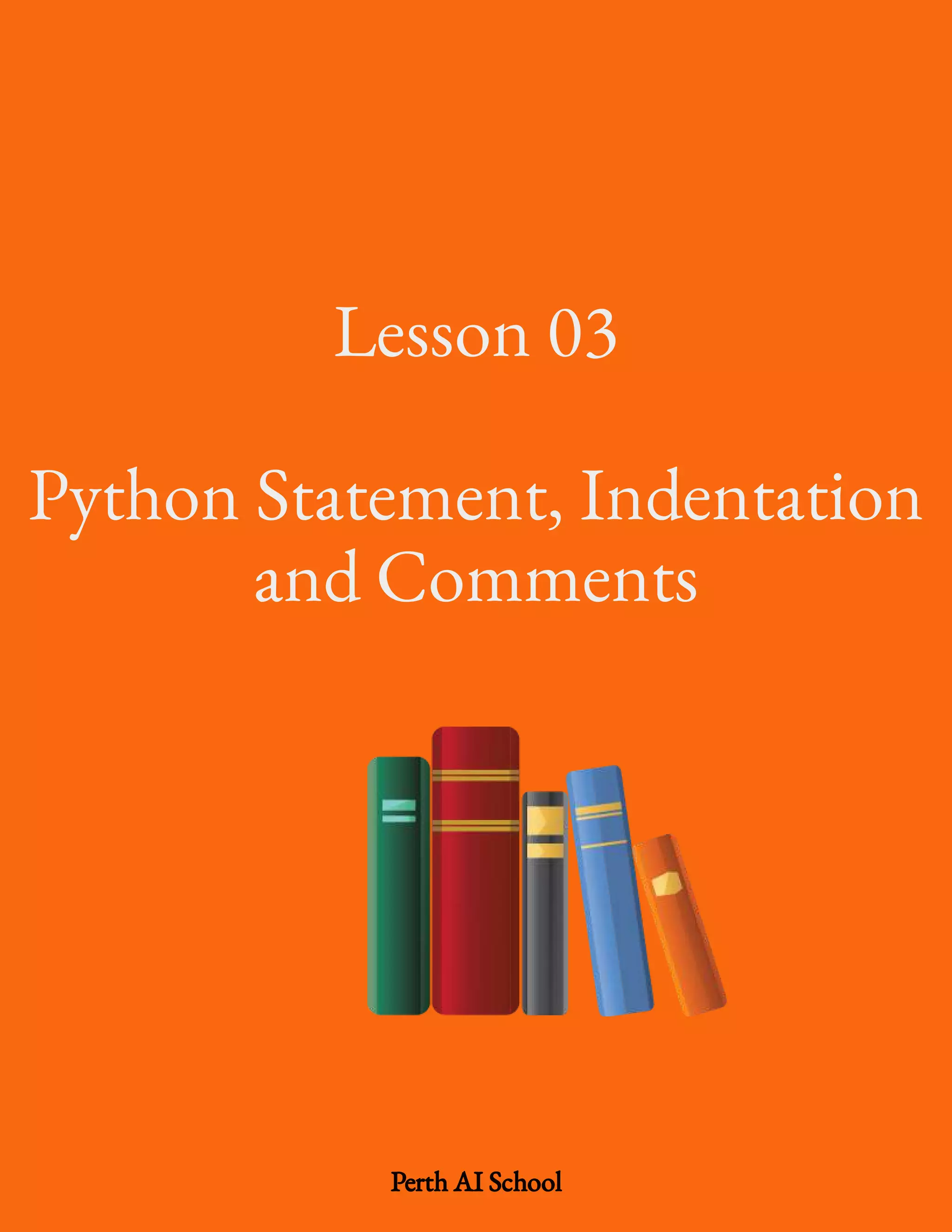This document provides an overview of Python statements, indentation, and comments. It explains how Python statements are executed, the use of indentation for code blocks, and the significance of comments and docstrings for code clarity and documentation. The document emphasizes the importance of consistent indentation and proper commenting practices for maintaining readable and maintainable code.

![Python Statement, Indentation and Comments Python Statement Instructions that a Python interpreter can execute are called statements. For example, is an assignment statement. statement, statement, statement, etc. are other kinds of statements which will be discussed later. a = 1 if for while Multi-line statement In Python, the end of a statement is marked by a newline character. But we can make a statement extend over multiple lines with the line continuation character (). For example: a = + + + + + + + + 1 2 3 4 5 6 7 8 9 This is an explicit line continuation. In Python, line continuation is implied inside parentheses , brackets , and braces . For instance, we can implement the above multi- line statement as: ( ) [ ] { } a = ( + + + + + + + + ) 1 2 3 4 5 6 7 8 9 Here, the surrounding parentheses do the line continuation implicitly. Same is the case with and . For example: ( ) [ ] { } colors = [ , , ] 'red' 'blue' 'green' We can also put multiple statements in a single line using semicolons, as follows: a = ; b = ; c =1 2 3](https://image.slidesharecdn.com/lesson03-pythonstatementindentationandcomments-201225100931/75/Lesson-03-python-statement-indentation-and-comments-2-2048.jpg)


